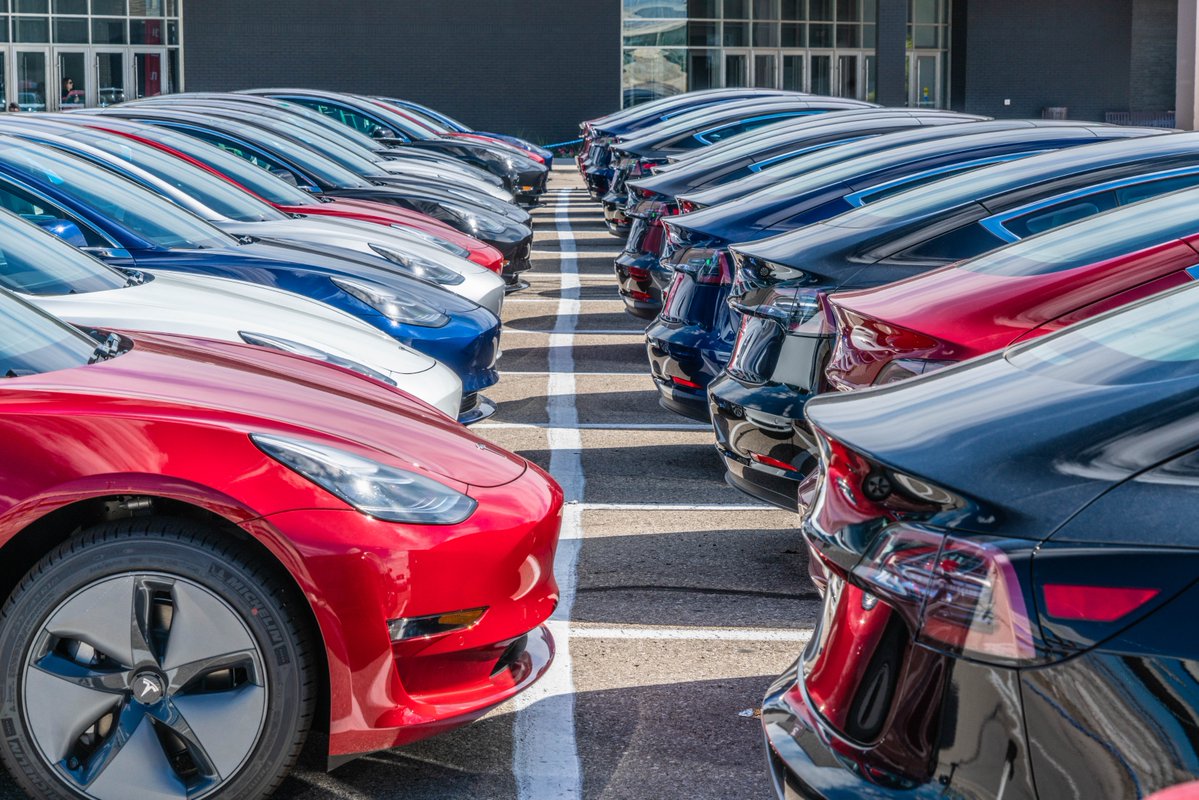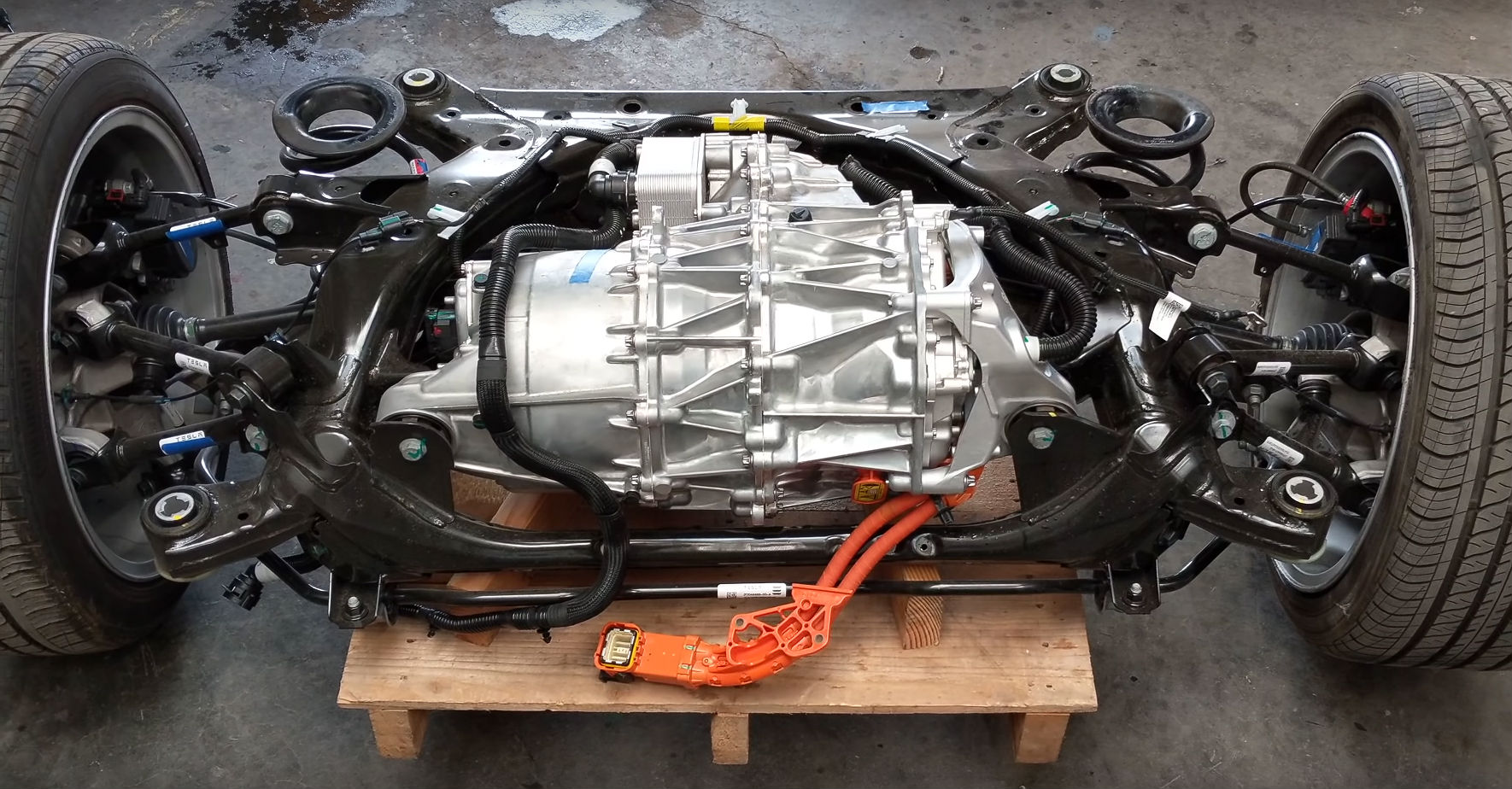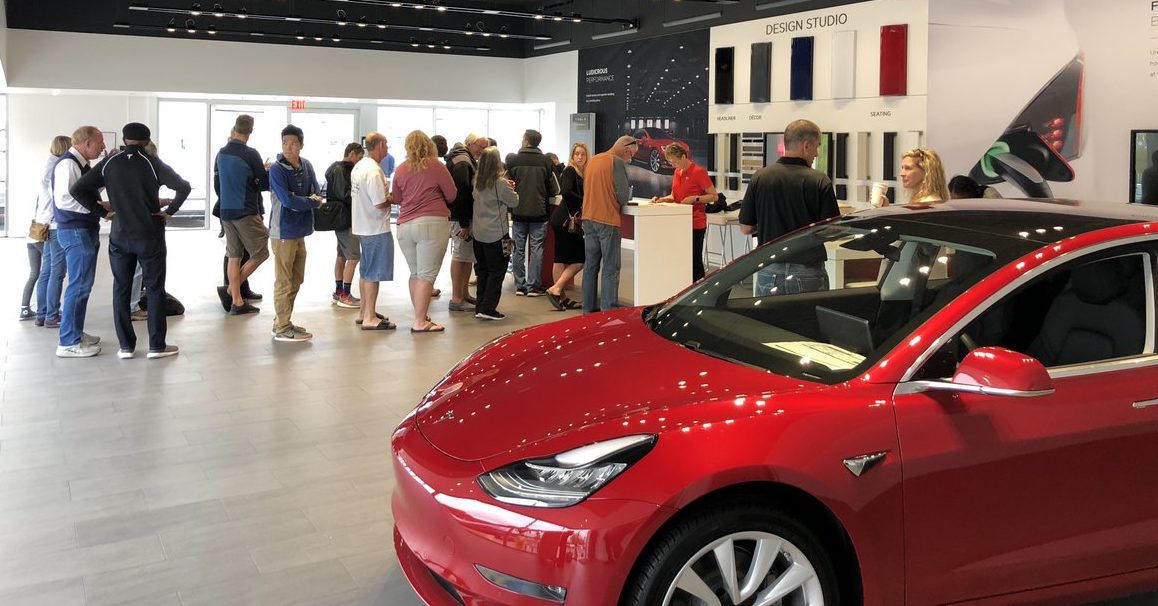

News
Tesla is building an empire with Model 3 drive units, custom chips, and loyal customers
When the Tesla Semi and the next-generation Roadster were unveiled last year, Elon Musk pointed out that the whole company was built on the original Roadster, an electric car which proved that EVs could be exciting, fun, and quick. Tesla is now at a point where it could become a threat to established premium automakers; and just like how Apple built a trillion-dollar empire on the back of the iPhone, Tesla seems poised to establish its own empire through its Model 3 drive units, its custom-made chips, and its passionate consumer base.
The brilliance of the Model 3’s drive unit was recognized by Detroit veteran Sandy Munro, whose company conducted a thorough teardown and analysis of the electric sedan. While Munro noted some points for improvement with regards to the vehicle’s chassis, he was incredibly impressed with the car’s suspension, batteries, and electric motor. Recently relating his findings to Bloomberg, Munro noted that the Model 3’s electric motor is a “game changer,” and that “everyone should be benchmarking (it).” The entire subframe where the drive unit is housed even detaches cleanly from the Model 3, seemingly allowing DIY enthusiasts in the future to resurrect drive units from damaged vehicles by using them for electric car conversions.
Tesla recently shared images of the Model 3’s drive system after being tested for over 1 million miles. Images of the drive system’s gears suggest that there was very little wear and tear despite extensive testing. With this in mind, Tesla’s idea of using the Model 3’s drive unit to power upcoming vehicles like the Semi and the Model Y, or possibly even the Tesla Truck and the upcoming compact car, could pay off in spades for the company. If teardowns of the Model 3 are any indication, after all, the electric car’s drive unit could very well be reliable, easy to manufacture, and even swappable if the need arises. It could, in a way, be a building block in Tesla’s emerging empire.

Beyond the Model 3’s drive units, Tesla is also starting to dip its feet into creating its custom chip. Such a strategy is very much in line with Tesla’s character, considering that the company already manufactures many of its vehicles’ components in-house. In an interview with Yahoo Finance last week, ARK Invest CEO and CIO Cathie Wood noted that the electric car maker’s initiatives towards the creation of its own hardware are a “replay of Apple.” Wood notes that in the same way Apple’s innovations with the iPhone pushed the tech giant to create its own silicon, Tesla’s progress with the intelligent tech in its vehicles are driving the electric car maker to design and build its own chips.
“This is a replay of Apple. Apple was moving so fast with the smartphone that it had to design its own chip to move that fast. This is what has happened to Tesla. Nvidia chips will be in mostly every other autonomous vehicle to hit the market. But Musk has a vision for this market that needs (a) faster, better, cheaper, sooner (solution) – and so he designed it himself,” Wood noted.
Elon Musk is optimistic about the potential of Tesla’s custom silicon. Designed by a team led by Pete Bannon, who used to work for Apple, Musk noted that Tesla’s custom hardware would be ” the world’s most advanced computer designed specifically for autonomous operation.” This custom chip, which would be included in Tesla’s Hardware 3, will be rolled out to all production cars in around six months; and if Tesla’s other in-house solutions are any indication, the introduction of its upcoming silicon would likely allow the company to establish a lead against rival automakers who are also dabbling in self-driving initiatives.

While Tesla’s vehicles and their components make the company a formidable player in the car industry, it is perhaps its dedicated consumer base that makes Tesla downright threatening to traditional auto. It is quite rare to see a car company command such a devoted following, though considering Tesla’s stance in the auto industry today, the strong brand loyalty displayed by Tesla owners is not very surprising at all. As Tesla grew over the years, after all, the company has practically transformed itself into an entity that is far more than a carmaker or a battery storage provider. Tesla has become a movement of sorts, populated by electric car owners who are willing to pay it forward when needed. This was shown in the final weeks of Q3, when owners mobilized to help the company deliver as many vehicles as it could before September ended.
The Tesla community’s dedication to the company’s mission and vision were in full force earlier this month as well, as 36 Tesla Owner’s Clubs from nine countries convened in Fremont, CA to meet and strategize initiatives that can help support the growing number of electric car owners across the globe. Denver Tesla Club President Sean M. Mitchell, who attended the meeting, believes that the source of enthusiasm among electric car owners is multifold. For one, the company was able to integrate technology in a way that made even something as ordinary as driving exciting once more. Sean also notes that the company’s grass-roots marketing approach, which relies primarily on word-of-mouth, fosters a very authentic and honest relationship among owners.
It remains to be seen if Tesla would be succeed in its mission to accelerate the world’s transition to renewable energy. That said, the company’s strategy in its electric vehicle business seems to be working, as legacy carmakers such as Porsche and Jaguar are starting to fully embrace the idea of a zero-emissions fleet. Companies such as Audi and Mercedes-Benz have also begun offering premium electric vehicles of their own. In South Australia, Tesla’s big battery is also triggering a clean energy movement, with similar renewable projects now underway after the Powerpack farm proved to be effective. Ultimately, Tesla’s empire might not be as tangible or evident today, but the components that would make it are already there, steadily growing.

Elon Musk
Starlink passes 9 million active customers just weeks after hitting 8 million
The milestone highlights the accelerating growth of Starlink, which has now been adding over 20,000 new users per day.

SpaceX’s Starlink satellite internet service has continued its rapid global expansion, surpassing 9 million active customers just weeks after crossing the 8 million mark.
The milestone highlights the accelerating growth of Starlink, which has now been adding over 20,000 new users per day.
9 million customers
In a post on X, SpaceX stated that Starlink now serves over 9 million active users across 155 countries, territories, and markets. The company reached 8 million customers in early November, meaning it added roughly 1 million subscribers in under seven weeks, or about 21,275 new users on average per day.
“Starlink is connecting more than 9M active customers with high-speed internet across 155 countries, territories, and many other markets,” Starlink wrote in a post on its official X account. SpaceX President Gwynne Shotwell also celebrated the milestone on X. “A huge thank you to all of our customers and congrats to the Starlink team for such an incredible product,” she wrote.
That growth rate reflects both rising demand for broadband in underserved regions and Starlink’s expanding satellite constellation, which now includes more than 9,000 low-Earth-orbit satellites designed to deliver high-speed, low-latency internet worldwide.
Starlink’s momentum
Starlink’s momentum has been building up. SpaceX reported 4.6 million Starlink customers in December 2024, followed by 7 million by August 2025, and 8 million customers in November. Independent data also suggests Starlink usage is rising sharply, with Cloudflare reporting that global web traffic from Starlink users more than doubled in 2025, as noted in an Insider report.
Starlink’s momentum is increasingly tied to SpaceX’s broader financial outlook. Elon Musk has said the satellite network is “by far” the company’s largest revenue driver, and reports suggest SpaceX may be positioning itself for an initial public offering as soon as next year, with valuations estimated as high as $1.5 trillion. Musk has also suggested in the past that Starlink could have its own IPO in the future.
News
NVIDIA Director of Robotics: Tesla FSD v14 is the first AI to pass the “Physical Turing Test”
After testing FSD v14, Fan stated that his experience with FSD felt magical at first, but it soon started to feel like a routine.

NVIDIA Director of Robotics Jim Fan has praised Tesla’s Full Self-Driving (Supervised) v14 as the first AI to pass what he described as a “Physical Turing Test.”
After testing FSD v14, Fan stated that his experience with FSD felt magical at first, but it soon started to feel like a routine. And just like smartphones today, removing it now would “actively hurt.”
Jim Fan’s hands-on FSD v14 impressions
Fan, a leading researcher in embodied AI who is currently solving Physical AI at NVIDIA and spearheading the company’s Project GR00T initiative, noted that he actually was late to the Tesla game. He was, however, one of the first to try out FSD v14.
“I was very late to own a Tesla but among the earliest to try out FSD v14. It’s perhaps the first time I experience an AI that passes the Physical Turing Test: after a long day at work, you press a button, lay back, and couldn’t tell if a neural net or a human drove you home,” Fan wrote in a post on X.
Fan added: “Despite knowing exactly how robot learning works, I still find it magical watching the steering wheel turn by itself. First it feels surreal, next it becomes routine. Then, like the smartphone, taking it away actively hurts. This is how humanity gets rewired and glued to god-like technologies.”
The Physical Turing Test
The original Turing Test was conceived by Alan Turing in 1950, and it was aimed at determining if a machine could exhibit behavior that is equivalent to or indistinguishable from a human. By focusing on text-based conversations, the original Turing Test set a high bar for natural language processing and machine learning.
This test has been passed by today’s large language models. However, the capability to converse in a humanlike manner is a completely different challenge from performing real-world problem-solving or physical interactions. Thus, Fan introduced the Physical Turing Test, which challenges AI systems to demonstrate intelligence through physical actions.
Based on Fan’s comments, Tesla has demonstrated these intelligent physical actions with FSD v14. Elon Musk agreed with the NVIDIA executive, stating in a post on X that with FSD v14, “you can sense the sentience maturing.” Musk also praised Tesla AI, calling it the best “real-world AI” today.
News
Tesla AI team burns the Christmas midnight oil by releasing FSD v14.2.2.1
The update was released just a day after FSD v14.2.2 started rolling out to customers.

Tesla is burning the midnight oil this Christmas, with the Tesla AI team quietly rolling out Full Self-Driving (Supervised) v14.2.2.1 just a day after FSD v14.2.2 started rolling out to customers.
Tesla owner shares insights on FSD v14.2.2.1
Longtime Tesla owner and FSD tester @BLKMDL3 shared some insights following several drives with FSD v14.2.2.1 in rainy Los Angeles conditions with standing water and faded lane lines. He reported zero steering hesitation or stutter, confident lane changes, and maneuvers executed with precision that evoked the performance of Tesla’s driverless Robotaxis in Austin.
Parking performance impressed, with most spots nailed perfectly, including tight, sharp turns, in single attempts without shaky steering. One minor offset happened only due to another vehicle that was parked over the line, which FSD accommodated by a few extra inches. In rain that typically erases road markings, FSD visualized lanes and turn lines better than humans, positioning itself flawlessly when entering new streets as well.
“Took it up a dark, wet, and twisty canyon road up and down the hill tonight and it went very well as to be expected. Stayed centered in the lane, kept speed well and gives a confidence inspiring steering feel where it handles these curvy roads better than the majority of human drivers,” the Tesla owner wrote in a post on X.
Tesla’s FSD v14.2.2 update
Just a day before FSD v14.2.2.1’s release, Tesla rolled out FSD v14.2.2, which was focused on smoother real-world performance, better obstacle awareness, and precise end-of-trip routing. According to the update’s release notes, FSD v14.2.2 upgrades the vision encoder neural network with higher resolution features, enhancing detection of emergency vehicles, road obstacles, and human gestures.
New Arrival Options also allowed users to select preferred drop-off styles, such as Parking Lot, Street, Driveway, Parking Garage, or Curbside, with the navigation pin automatically adjusting to the ideal spot. Other refinements include pulling over for emergency vehicles, real-time vision-based detours for blocked roads, improved gate and debris handling, and Speed Profiles for customized driving styles.








